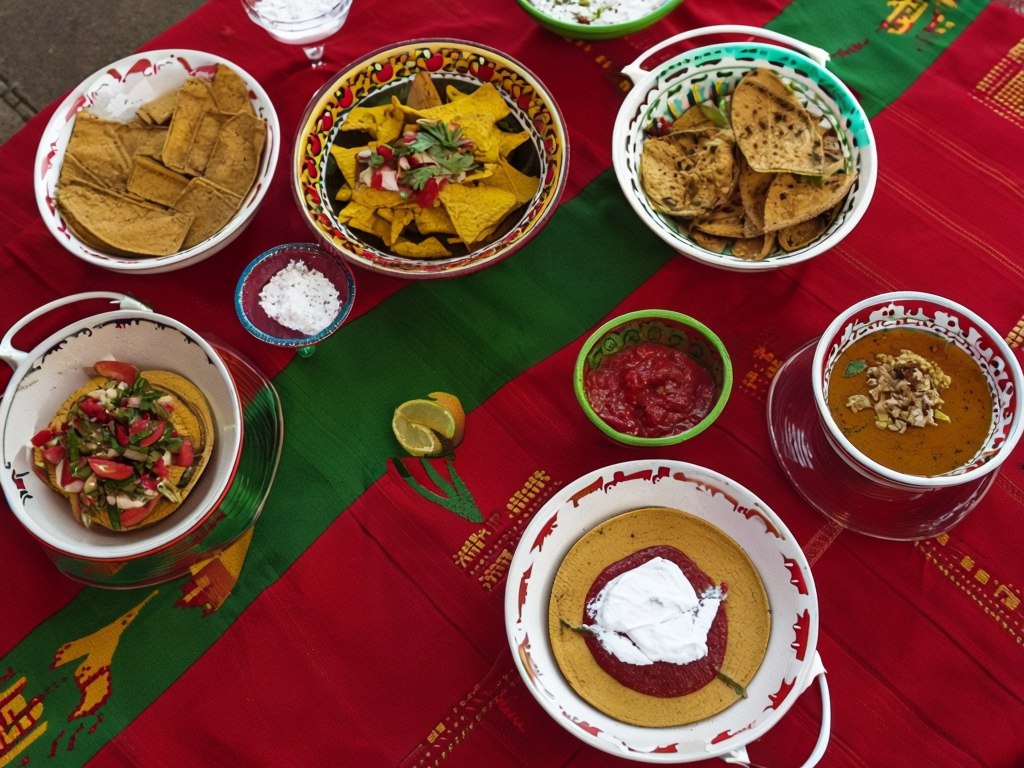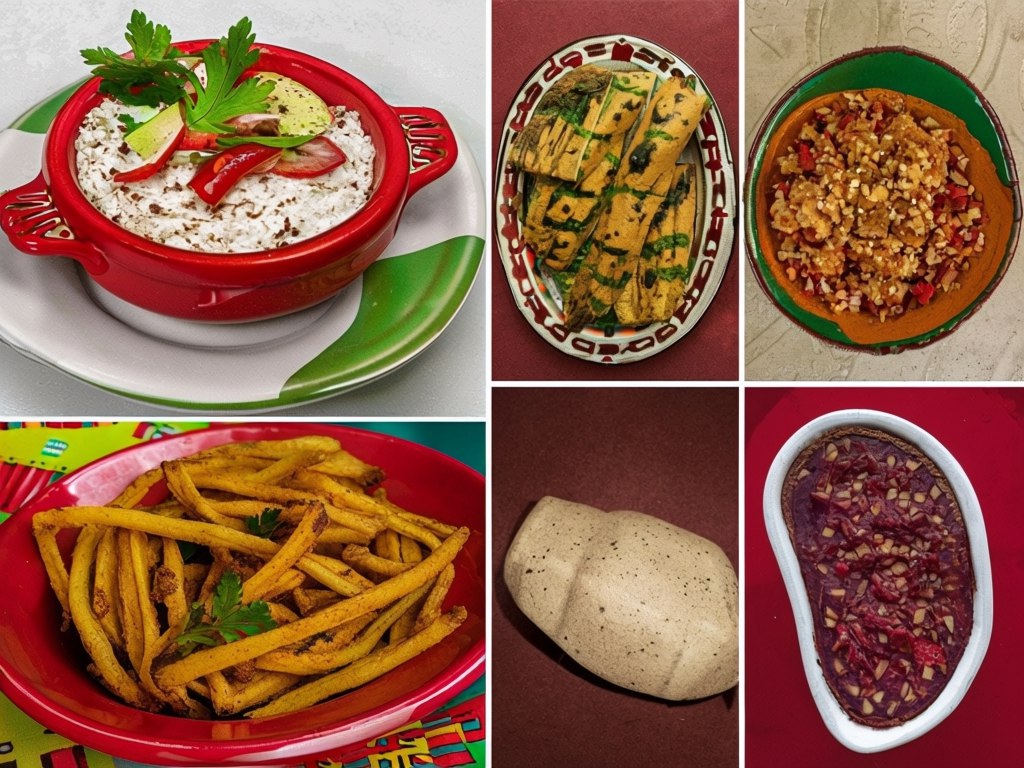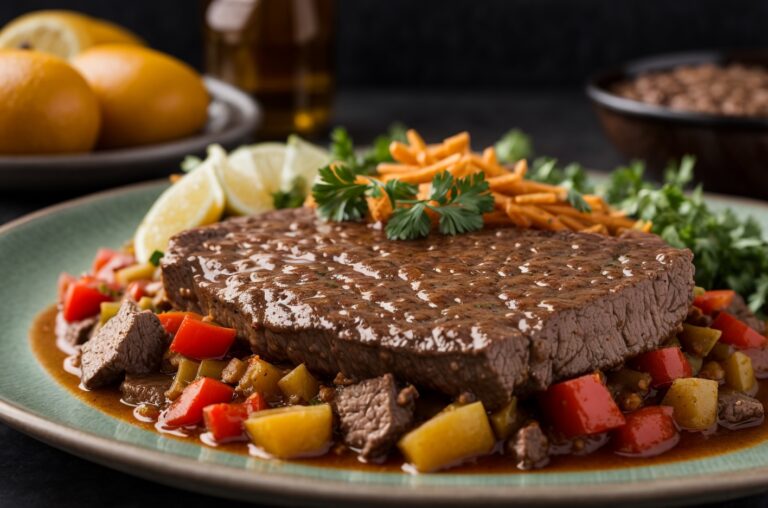What are 5 Traditional Foods in Mexico?
Mexico is a vibrant tapestry of culture, history, and flavors, with its traditional foods serving as a delicious representation of this rich heritage. From festive celebrations to everyday meals, Mexican cuisine plays a vital role in bringing people together, telling stories, and preserving traditions. Have you ever wondered what makes Mexican food so unique? In this article, we’ll explore five traditional foods that are not just meals but a reflection of Mexican culture itself. Each dish comes with its own history, preparation methods, and significance, making them a true feast for both the palate and the soul. So, let’s dig in and discover the delicious world of Mexican cuisine!
Table of Contents
| Sr# | Headings |
|---|---|
| 1 | Tacos: A Mexican Staple |
| 2 | Tamales: A Wrapped Tradition |
| 3 | Mole: A Complex Culinary Art |
| 4 | Chiles en Nogada: The Patriotic Dish |
| 5 | Pozole: The Comforting Soup |
| 6 | Conclusion |
| 7 | FAQs |
Tacos: A Mexican Staple
When you think of Mexican food, tacos likely come to mind first. These handheld delights are not just a meal; they are a cultural phenomenon. Imagine a warm corn tortilla cradling a variety of ingredients—succulent meats, fresh vegetables, and zesty salsas. Each taco tells a story, from its origin to the culinary creativity that shapes it.
Tacos originated as a simple way to wrap food for easy eating, much like how we might use a sandwich to carry lunch. The versatility of tacos is what makes them so appealing. You can find them filled with grilled meats, sautéed vegetables, beans, and even seafood. In Mexico, regional variations add even more character. For instance, in the north, you might encounter tacos de carne asada (grilled beef), while in the south, tacos al pastor—a delicious combination of marinated pork and pineapple—are a must-try.
But what truly sets tacos apart is the experience of eating them. Have you ever enjoyed tacos at a lively taquería? The sounds of sizzling meat on the grill, laughter, and the chatter of patrons create an atmosphere that’s inviting and exciting. It’s not just about the food; it’s about community. Tacos are often enjoyed in groups, encouraging sharing and conversation, much like a family gathering where everyone brings their favorite dish to the table.
Moreover, the toppings you choose can elevate your taco experience to new heights. From fresh cilantro and onion to a splash of lime and a dollop of guacamole, each addition adds layers of flavor and texture. You might even find yourself asking, “How many tacos can I eat?” as you savor each bite.
In essence, tacos embody the spirit of Mexico: diverse, flavorful, and meant to be shared. They are a reminder that food is not just fuel; it’s a celebration of life and community.
Tamales: A Wrapped Tradition

If tacos are the face of Mexican cuisine, then tamales are its heart. These delightful parcels of masa (corn dough) are filled with a variety of ingredients, wrapped in corn husks or banana leaves, and steamed to perfection. Tamales have a unique significance in Mexican culture, often associated with family gatherings and festive celebrations.

The process of making tamales is a communal event. Families often come together to prepare them, much like a team getting ready for a big game. Everyone has a role—some prepare the masa, while others fill and wrap the tamales. It’s a time for storytelling, laughter, and connection. Have you ever participated in a tamale-making party? It’s an experience filled with joy and the delicious aroma of masa and fillings.
Tamales have a rich history that dates back to ancient civilizations. They were portable food for warriors and travelers, much like how we might grab a quick snack before heading out. Today, tamales are a staple at Christmas and other celebrations, symbolizing unity and tradition.
The fillings can vary widely, from savory options like pork, chicken, and cheese to sweet varieties filled with fruits or chocolate. One popular type is the tamale rojo, which is filled with a spicy red chile sauce and tender pork, offering a delightful burst of flavor. The first bite transports you to a place of comfort, like curling up with your favorite blanket on a chilly day.
Tamales are not just food; they are a connection to heritage and a reminder of the importance of family. As you unwrap one, you’re not just revealing a delicious treat; you’re uncovering layers of tradition and love.
Mole: A Complex Culinary Art
Next on our culinary journey is mole, a sauce that is often described as the crown jewel of Mexican cuisine. With its complex flavors and rich history, mole elevates any dish to a new level of deliciousness. But what exactly is mole, and why is it so revered?
Mole is a blend of various ingredients, including chiles, spices, nuts, seeds, and sometimes even chocolate. Each mole has its own unique recipe, resulting in a rich tapestry of flavors. The most famous is mole poblano, which comes from Puebla and is known for its deep, rich flavor and vibrant color.
Creating mole is akin to composing a symphony. Each ingredient plays its own note, and the final product is a harmonious blend of flavors that can take your taste buds on a journey. Imagine spending hours roasting chiles, grinding spices, and mixing everything together until you achieve that perfect balance. It’s a labor of love that pays off with every mouthful.
Mole is often served with chicken or turkey, and the dish becomes a centerpiece during celebrations. Picture a festive gathering where a beautifully plated mole dish takes center stage. The rich aroma wafts through the air, inviting everyone to dig in. The first taste might overwhelm you with complexity—sweet, spicy, and savory—all at once. It’s like a dance of flavors on your palate, making each bite a memorable experience.
In many families, mole is a recipe passed down through generations, connecting loved ones to their heritage. The preparation of mole is often a communal activity, reinforcing the importance of family bonds. As you savor mole, remember that you’re not just enjoying a meal; you’re partaking in a tradition that has endured for centuries.
Chiles en Nogada: The Patriotic Dish

When it comes to celebrating Mexican culture, few dishes are as symbolic as chiles en nogada. This colorful dish features poblano chiles stuffed with a savory mixture of meat, fruits, and spices, topped with a creamy walnut sauce and pomegranate seeds. It’s a dish that embodies the colors of the Mexican flag and is often enjoyed during patriotic celebrations.
Chiles en nogada was created to honor Agustín de Iturbide, a hero of Mexican independence, making it a dish rich in history and symbolism. The vibrant green chiles, white sauce, and red pomegranate seeds come together to create a feast for the eyes and palate. When served at celebrations like Mexican Independence Day, this dish evokes a sense of national pride.
The preparation of chiles en nogada is a labor-intensive process, requiring careful attention to detail. The poblano chiles are roasted and peeled, then filled with a savory mixture that often includes ground meat, fruits, and spices. The walnut sauce is made from fresh walnuts, resulting in a creamy topping that perfectly complements the flavors of the stuffed chiles.
Each bite of chiles en nogada is a burst of flavor, with the sweetness of the fruits balancing the savory meat. It’s like a culinary masterpiece that invites you to savor every moment. The dish is often enjoyed during special occasions, reinforcing its status as a celebration of Mexican culture and heritage.
In essence, chiles en nogada is not just food; it’s a reflection of pride and history. It connects people to their roots and reminds us of the importance of celebrating traditions.
Pozole: The Comforting Soup
As we wrap up our exploration of traditional Mexican foods, we cannot overlook the beloved pozole. This hearty soup made from hominy (dried corn kernels) is a comforting dish that warms the soul. Pozole is often served with a variety of toppings, including shredded meat, cabbage, radishes, and lime, creating a customizable experience.
Pozole has a rich history that dates back to the Aztecs, who considered it a sacred dish. It was traditionally prepared for special occasions, making it a symbol of celebration and community. Imagine sitting down to a steaming bowl of pozole with family and friends, the comforting aroma enveloping you like a warm embrace.
The beauty of pozole lies in its adaptability. There are different regional variations, each with its own unique twist. Pozole rojo features a vibrant red broth made from dried chiles, while pozole blanco is more straightforward, focusing on the pure flavors of the hominy and meat. Pozole verde introduces tomatillos and cilantro for a zesty kick.
The process of making pozole is a labor of love. Imagine spending hours simmering the broth and preparing the toppings. Each bowl becomes a canvas for creativity as you pile on your favorite garnishes. It’s not just a meal; it’s an experience that invites everyone to participate.
When you take that first spoonful of pozole, the rich flavors and comforting textures make you feel at home. It’s like being wrapped in a cozy blanket, offering a sense of warmth and belonging. Pozole is often enjoyed during celebrations, reinforcing its status as a dish that brings people together.

Conclusion
Exploring traditional Mexican foods is like embarking on a flavorful journey through the country’s rich history and culture. Each dish tells a story, connecting us to the past while bringing people together in the present. From the vibrant tacos to the comforting pozole, these traditional foods showcase the diversity and creativity of Mexican cuisine.
As you savor each bite, remember that you’re not just enjoying a meal; you’re partaking in a tradition that has been passed down through generations. So, the next time you find yourself in a Mexican restaurant or a kitchen filled with tantalizing aromas, take a moment to appreciate the stories behind the food. After all, every dish is a celebration of life, love, and community.
FAQs
What is the most popular traditional food in Mexico?
Tacos are often considered the most popular traditional food, known for their versatility and wide range of fillings.
What ingredients are commonly used in traditional Mexican dishes?
Common ingredients include corn, beans, chiles, tomatoes, and various meats, reflecting the diversity of regional cuisines.
Are there vegetarian options in traditional Mexican cuisine?
Yes, many traditional dishes can be made vegetarian, such as quesadillas, chiles rellenos, and various bean-based dishes.
What is the significance of food in Mexican culture?
Food is a central part of Mexican culture, symbolizing family, community, and celebration. It brings people together during gatherings and special occasions.
How can I make traditional Mexican dishes at home?
Start with simple recipes like tacos or tamales, using fresh ingredients. There are many resources online to guide you in creating authentic Mexican dishes.







